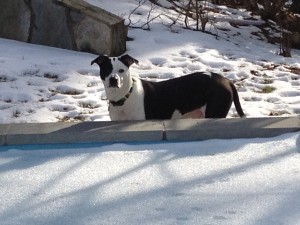Latest Posts
- Have a purpose when backyardingAugust 5 2021
- Study: Time outside alters our microbiomeAugust 4 2021
- Happy National Mutt Day from Mo-MoJuly 27 2021
- New home? Avoid these common mistakes in your yard.July 26 2021
- Infographic: Plan a backyard staycation this summerJuly 22 2021
Categories
Archive
December 5th
TurfMutt’s winter safety tips for pets

TurfMutt is a former street dog who spent cold days and nights without a home before he was rescued by his human Kris Kiser, President and CEO of the Outdoor Power Equipment Institute (OPEI). Now, TurfMutt (a.k.a. Lucky) has a warm bed to sleep in and a new mission – to teach kids and their families about the importance of our living landscapes.
This superdog knows that part of taking care of the family yard in the winter months includes cleaning up from snow and ice storms. He also knows that pets feel the cold just like humans do.
Here are TurfMutt’s tips for keeping everyone in your family – including your pets – safe and warm this winter.
- Reduce outdoor activities when temperatures dip low. Your pets will always be most comfortable inside with you. But, it’s imperative you keep them indoors during severe weather.
- Using a snowthrower can make quick work of snow removal and can create a path to your pet’s bathroom area. Always keep kids and pets away from the equipment.
- Don’t cut your dog’s fur in the wintertime. Pets naturally develop winter coats to protect them from the cold.
- After bathroom breaks and walks, check your pet’s ears, paws and tail for any ice and snow build up or signs of frostbite.
- Keep a dry, clean towel handy to wipe down your pet’s legs, belly and paws after each outdoor excursion. Ice-melt chemicals can irritate their skin and cause serious illness if ingested.
- Antifreeze smells and tastes sweet to pets, but it’s toxic to dogs and cats. Quickly clean up any spills, and consider using a brand made from non-toxic propylene glycol instead.
- Ensure your pet has plenty of fresh, clean water to drink. Winter air is dry!
- Offer a warm, dry place for your pet to rest inside. A pet bed works perfectly.
Finally, remember this important rule. If it’s too cold for you to be outside, it’s too cold for your pet, too. As guardians of our pets, it’s important that we keep their safety in mind during all kinds of weather.
To learn more about the benefits of our living landscapes and how to properly care for them in all kinds of weather, go to SaveLivingLandscapes.com.





